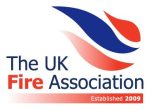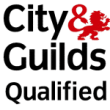At ESI: Electrical Safety Inspections, we deliver comprehensive fire safety services to businesses across Crawley. Whether you manage an office, warehouse, retail premises, care home, school, or industrial site, we help you stay compliant, protect staff and customers, and safeguard your property.
With over 20 years of experience, we understand the legal and practical challenges businesses face when it comes to fire safety. Our qualified engineers and fire safety specialists provide expert advice, inspections, testing, and maintenance in line with UK regulations and British Standards.
Book Your Fire Safety Assessment Today – Protect your business and meet your legal obligations. Call us now on 01276 300 351 to schedule your visit.
Fire Safety Compliance and Best Practice
Crawley businesses are legally required under the Regulatory Reform (Fire Safety) Order 2005 to maintain a safe environment and ensure that all fire safety systems and equipment are properly installed, maintained, and tested.
Our services are delivered in compliance with key standards, including:
-
BS 5839 – Fire detection and alarm systems
-
BS 5306-3 & BS 5306-8 – Fire extinguisher servicing and selection
-
BS 5266 – Emergency lighting installation and testing
-
BS 9990 – Dry riser testing and maintenance
-
BS 9991 & BS 9999 – Fire safety in residential and commercial buildings
Get Expert Fire Protection Advice – Speak to our qualified team about fire safety compliance and protecting your premises – Call today on 01276 300 351.
Our Fire compliance services in Crawley
🔥 Fire Risk Assessments – Identifying hazards, evaluating risks, and providing practical recommendations to meet legal obligations under the Fire Safety Order.
🔥 Fire Alarm Servicing & Maintenance – Testing and maintenance of fire detection systems in line with BS 5839, helping ensure early warning in the event of fire.
🔥 Fire Extinguisher Supply & Servicing – Supplying, commissioning, maintaining, and testing portable extinguishers in accordance with BS 5306-3, ensuring equipment is ready to use when needed.
🔥 Emergency Lighting Testing & Maintenance – Inspection and testing to BS 5266 standards, ensuring emergency lighting works correctly to guide occupants to safety.
🔥 Dry Riser Inspection & Testing – Six-monthly visual inspections and annual pressure testing in compliance with BS 9990, keeping vital fire-fighting infrastructure ready for use.
🔥 Fire Safety Training – Practical staff training on fire prevention, extinguisher use, and evacuation procedures.
🔥 Fire Door Inspections – Checking condition, fit, and compliance of fire doors to ensure they provide effective compartmentation and protection.
Why Choose ESI in Crawley
-
Qualified engineers and fire safety specialists serving Crawley
-
In-depth knowledge of commercial and industrial fire safety compliance
-
Clear, actionable reports and certification
-
Flexible scheduling to minimise disruption
-
Supporting businesses across Crawley and surrounding areas
Stay Compliant and Safe – Contact us on 01276 300 351 for a free quote on fire alarm servicing, extinguisher maintenance, and risk assessments.
Frequently Asked Questions
Q: How often should fire alarms be serviced?
A: Fire alarms should be tested regularly, with a minimum of two service visits per year for most systems, as recommended in BS 5839.
Q: What training do my staff need?
A: Under the Fire Safety Order, you are required to provide adequate fire safety training to all staff. We offer practical courses tailored to your premises and risk profile.
Q: Do you provide fire extinguisher servicing?
A: Yes – we supply, commission, and maintain fire extinguishers in line with BS 5306-3, ensuring you have the correct type and coverage for your business.
Fire Safety Services in Crawley
Crawley () is a town and borough in West Sussex, England. It is 28 miles (45 km) south of London, 18 miles (29 km) north of Brighton and Hove, and 32 miles (51 km) north-east of the county town of Chichester. Crawley covers an area of 17.36 square miles (44.96 km) and had a population of 118,493 at the time of the 2021 Census. Southern parts of the borough lie immediately next to the High Weald National Landscape.
The area has been inhabited since the Stone Age, and was a centre of ironworking in the Iron Age and Roman times. The area was probably used by the kings of Sussex for hunting. Initially a clearing in the vast forest of the Weald, Crawley began as a settlement on the boundary of two of the sub-regions particular to Sussex, known as Rapes, the Rape of Bramber and the Rape of Lewes. Becoming a market town in 1202, Crawley developed slowly, serving the surrounding villages in the Weald. In the medieval period, its location on the main road from London to the port of Shoreham helped the town to grow and when Brighton became a fashionable seaside town in the 17th century this brought passing trade, which encouraged the development of coaching inns. A rail link to London and Brighton opened in 1841, encouraged further development.
After the Second World War, the British Government planned to move large numbers of people and jobs out of London and into new towns around South East England. The New Towns Act 1946 (9 & 10 Geo. 6. c. 68) designated Crawley as the site of one of these. A master plan was developed for the establishment of new residential, commercial, industrial and civic areas, and rapid development greatly increased the size and population of the town over a few decades.
The town expanded further in 1974, to include Gatwick Airport, Britain’s 2nd busiest international airport and in 2024, the 10th largest in Europe. The town contains 14 residential neighbourhoods radiating out from the core of the old market town, and separated by main roads and railway lines. The nearby communities of Ifield, Pound Hill and Three Bridges were absorbed into the new town at various stages in its development. Established in 2019, the south-western suburb of Kilnwood Vale lies outside of the borough boundary in the neighbouring district of Horsham.
Economically, the town has developed into the main centre of industry and employment between London and Brighton. Its large industrial area supports manufacturing and service companies, many of them connected with the airport. The commercial and retail sectors continue to expand.







